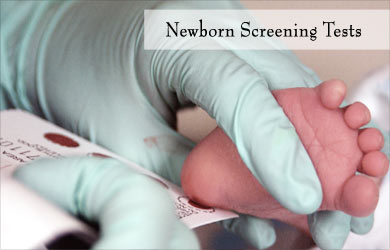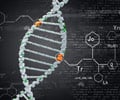- About Galactosemia - (http://www.nlm.nih.gov/medlineplus/ency/article/000366.htm)
- Galactosemia - (http://ghr.nlm.nih.gov/condition/galactosemia)
What is Galactosemia?
Galactosemia is a genetic disorder in which the body cannot process galactose, which is a simple sugar that is found in many foods. It is actually part of the sugar called lactose, (lactose contains glucose and galactose) which is present in almost all dairy products and most foods made for babies. The affected infant will not be able to process and use galactose in energy production, as would a healthy baby, and this will result in certain symptoms. This can be extremely serious because it means that the infant cannot break down galactose from mother’s milk resulting in a buildup of galactose containing substances, which then begin to affect various organs.
Symptoms of galactosemia generally surface within a few hours after birth and should be treated as urgent. The severity of symptoms and the threat of long-term complications or even fatality can vary greatly also because there are different types of Galactosemia. These include:

- Classic galactosemia, also referred to as type I galactosemia, is the most threatening of all and infants suffering from this condition may even develop life-threatening complications within just a few days of birth unless the infant is put on a low-galactose diet. Affected babies will display a whole range of worrying symptoms and will also most likely have delayed development problems as they grow. One risk that is common to all three types of galactosemia is the risk of developing cataracts of the eye.
- Galactosemia type II is a lot less problematic, with fewer and less severe symptoms and it also poses a lower risk of long term complications. Cataract is the only major long term risk.
- Galactosemia type III can cause symptoms that vary greatly in severity and affected infants may experience developmental problems, delayed growth and other complications.
What are the Causes of Galactosemia?
Galactosemia is an inherited condition that is caused by mutations in certain genes. It isn’t horribly common and there is a 25% chance of a baby being born with the condition if both parents carry the mutated genes. There are three genes responsible and these include the GALE, GALK1, and GALT genes. These genes contain the code or set of instructions for the production of enzymes that are needed to process and break down galactose in the body. In a healthy child these enzymes would break down galactose into glucose and other simple sugars that can be utilized by the body as energy.
While abnormalities in the GALT gene are responsible for classic galactosemia or galactosemia type I, GALK1 mutations cause galactosemia type II and GALE mutations cause galactosemia type III.
What are the Symptoms and Signs of Galactosemia?
The main symptoms of galactosemia appear within a few days or weeks after birth. These include:
- Appetite loss
- Poor weight gain and slow growth
- Excessive vomiting and diarrhea

- Jaundiced skin and mucous membranes
- Hepatomegaly or liver enlargement
- Presence of protein and amino acids in urine
- Hypoglycemia or low blood glucose levels
- Ascites and edema
- Lethargy and irritability
- Recurrent bacterial infections
As the condition deteriorates, the muscles will begin to waste away and there will be significant weight loss as well. Classic galactosemia can be fatal if untreated as it can cause damage to the vital organs, resulting in liver or kidney failure or brain damage. If symptoms of galactosemia surface, galactose should be completely eliminated from the diet. Your health care providers will recommend a suitable diet and in such cases, the child’s growth and health should be normal. While the risk of developmental problems is much higher if treatment is delayed, there may be some delays and problems in physical and intellectual development. Children born with galactosemia are also at a high risk of developing cataract. Female patients with galactosemia may suffer from ovarian failure.
How to Diagnose Galactosemia?
In most parts of the world, newborn screening tests look for this condition. The tests can also be conducted if any symptoms of galactosemia appear. A test for galactosemia would involve a blood test, with samples from the heel of the infant or a urine test. If an infant suffers from galactosemia, it means that one of the three necessary enzymes for the breakdown of galactose is missing and consequently there is a buildup of galactose which can be detected in the blood or urine sample.

Genetic testing can also establish the presence of any mutations, helping confirm a diagnosis.
How do you Treat Galactosemia?
The most effective method of treatment for galactosemia would be through early detection. Testing the activity levels of the “galactose-1-phosphate uridyl transferase” enzyme in red blood cells before birth is the surest indicator. The earlier an individual is diagnosed, the better the treatment outcome, which is why testing infants at the time of birth or still earlier, is advisable.
The primary method of treatment is through a specialized dietary regime that only includes lactose-free milk substitutes and certain foods like as casein hydrolysates and soy bean products. It is absolutely essential that these tight restrictions are maintained until the child has reached the age of at least two years. If possible, it would be best to wait for even longer, such as when the child has reached the age of six years. Keep in mind that if a child suffers from galactosemia, he/she should not be given a lactose intolerance test.
Depending on each individual situation and the extent of damage or complications, there may also be a need for additional treatment, usually involving the use of antibiotic drugs. This is important as the risk of infection can be quite high especially when galactosemia is diagnosed late.

Sadly, dietary changes require tremendous support and involvement from the entire family. In this regard, support groups can help parents and care givers improve the quality of care they provide while also coping with the pressure of raising a child with such special needs. If such complete care is provided, there is a good chance of the child growing without any developmental problems.
There is also ongoing research into new methods of treatment such as through the use of the drug ureline. While tests so far have been very positive, more research and clinical trials will be necessary before the drug can be approved as safe for use.
Prevention of Galactosemia
Galactosemia, like other genetic disorders, cannot be prevented but there are things that parents can do if they have a family history of the disease. It would be a good idea for couples to consult genetic counselors to determine if they are carriers and if there is any risk to the child. A detailed family history and genetic testing will be used to identify carriers. If you are a carrier it would be advisable to undergo genetic counseling before you conceive a child.








